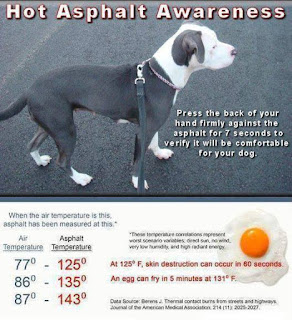If you have a
canine pet, you should pray that you never have to deal with tumors in your
pet. Some tumors can be dangerous and they can even take away the life of your
pet. Canine Tumors can occur
in different parts of the body, but the most dangerous one occurs in the brain.
A tumor in the brain shows some special symptoms. In the initial stages these
symptoms are manageable, but they often turn out to be incurable. In fact, it
can be one of the saddest incidents your dog might have to go through.
Growth In The Brain:
 When you consult your vet for the
symptoms, he will explain you about the growth in the brain of your canine.
However, it is important to note that Canine Tumors in the brain might not always be cancerous. These can often mean the
growth of an abnormal tissue in the brain. It is often the result of the growth
of brain cells within the brain and the membranes. The other might be a cancer,
which might spread to the brain from some other parts in the body. Thus, if you
notice signs that your dog isn’t acting normal or has stopped eating, dragging
limbs or veering of course, chances are high that it has some issues in the
brain and needs to be treated immediately.
When you consult your vet for the
symptoms, he will explain you about the growth in the brain of your canine.
However, it is important to note that Canine Tumors in the brain might not always be cancerous. These can often mean the
growth of an abnormal tissue in the brain. It is often the result of the growth
of brain cells within the brain and the membranes. The other might be a cancer,
which might spread to the brain from some other parts in the body. Thus, if you
notice signs that your dog isn’t acting normal or has stopped eating, dragging
limbs or veering of course, chances are high that it has some issues in the
brain and needs to be treated immediately.
Affecting Each Area Differently:
Brain tumors can occur in the front,
the back and the tube that leads to the brain. Different tumors can affect
different parts of the brain in a different way. Based on the location of the Canine
Tumors, the series of symptoms your
dog show might vary. If your dog is above 5 years and have shown any
neurological signs negatively, it might be the sign of a tumor. For instance,
your dog might face frequent seizures, loss of balance, difficulty in
swallowing, loss of sight or heating, difficulty in swallowing, opening and
closing of eyes in a strange manner, etc.
Subset of Behaviors:
Often, these neurological disorders
might be easy to define as tumor. However, in some cases, there might be other
subset of behaviors, due to which it might be difficult to connect to a tumor.
These can include anything from loss of memories, onset of depression,
decreased thirst and appetite, vomiting, loss of bladder control etc.
Sometimes, your dog might also act in a way to show his pain or press his head
against hard surfaces. However, these symptoms are not to be ignored, and you
should definitely consult a vet at the earliest.
No Known Preventive Measures:
Unfortunately, there are no known
measures of prevention for these tumors. They just happen by chance. Sometimes,
the Canine Tumors might be there for a long time before the symptoms occur.
This in turn might be further difficult for you to treat the condition at the
right time. Such tumors grow slowly due to which the brain is in a position to
adjust the negative symptoms. To read more Click Here





